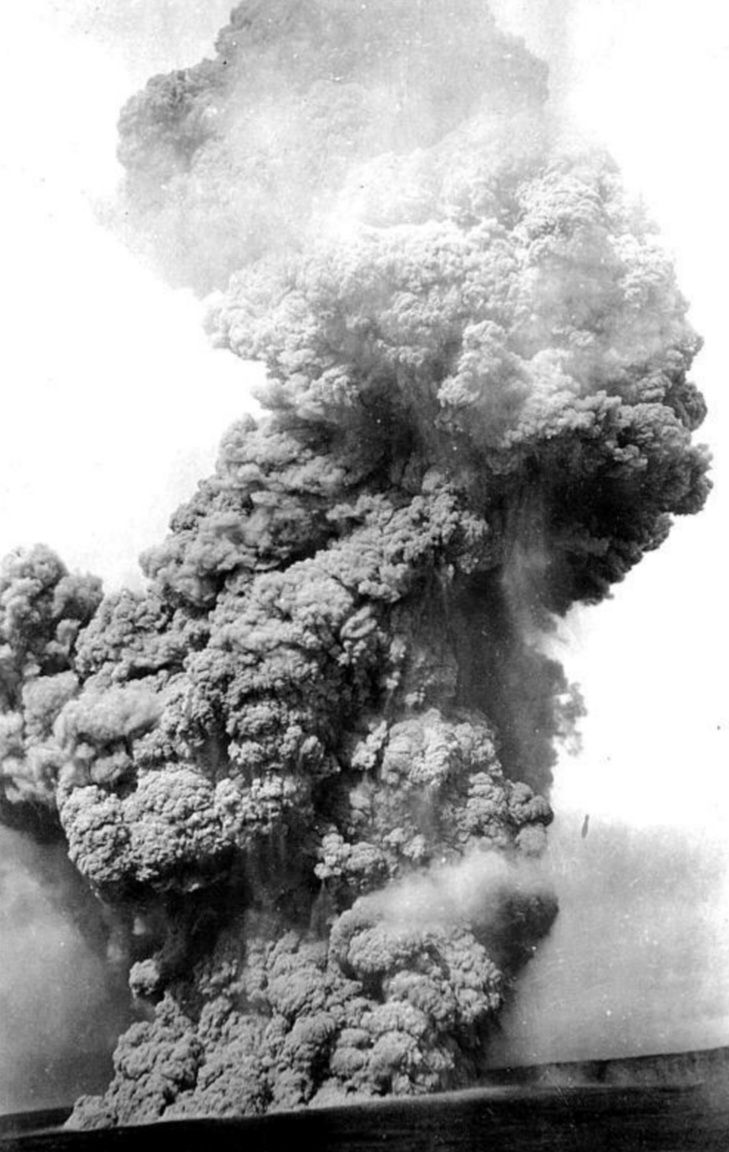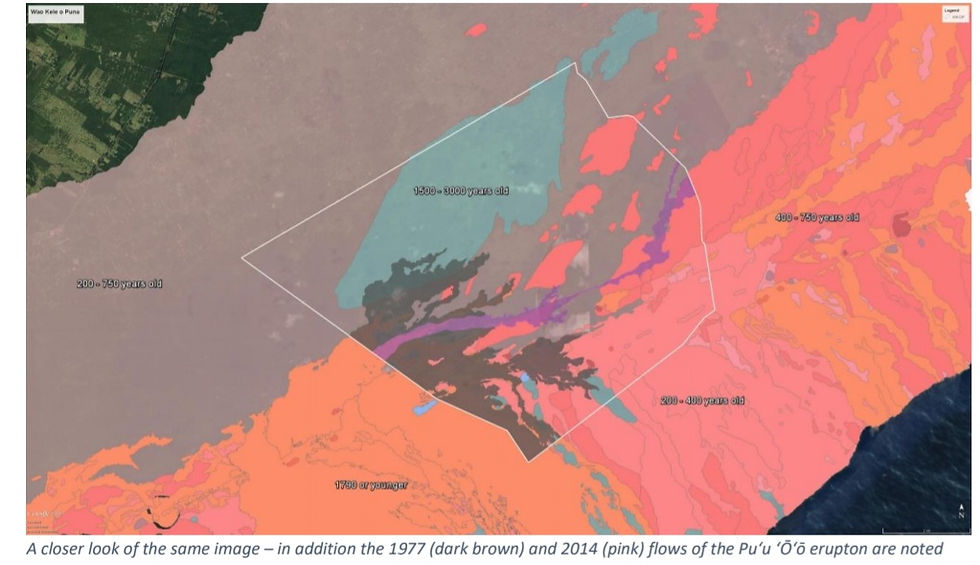The Longest ever recorded eruption at Kīlauea volcano, Hawaiian Islands #WeAreKilauea #AlohaActivism
- Jasmine Steiner

- May 25, 2023
- 4 min read
The longest recorded eruption at Kīlauea, arguably, was the ʻAilāʻau eruption and lava flow in the 15th century, which may be memorialized in the Pele-Hiʻiaka chant.
It was the largest in Hawaiʻi in more than
1,000-years.
The flow was named after ʻAilāʻau, who was known and feared by all the people. ʻAi means the “one who eats or devours.” Lāʻau means “tree” or a “forest.”
ʻAilāʻau was, therefore, the forest eating (destroying) fire-god.
Time and again he laid the districts of South Hawai‘i desolate by the lava he poured out from his fire-pits. (He was the fire god
before Pele arrived at Hawaiʻi Island.)
He was the god of the insatiable appetite; the continual eater of trees, whose path through forests was covered with black smoke fragrant with burning wood, and sometimes burdened
with the smell of human flesh charred into cinders in the lava flow.
ʻAilāʻau seemed to be destructive and was so named by the people, but his fires were a part of the forces of creation. He built up the islands for future life. The flowing lava made land. Over time, the lava disintegrates and makes earth deposits and
soil. When the rain falls, fruitful fields form and people settled there.
ʻAilāʻau still poured out his fire. It spread over the fertile fields, and the people feared him as the destroyer giving no thought
to the final good.
He lived, the legends say, for a long time in a very ancient part of Kīlauea, on the large island of Hawai‘i, now separated by a narrow ledge from the great crater and called Kīlauea Iki (Little Kīlauea).

The ʻAilāʻau eruption took place from a vent area just east of Kīlauea Iki. The eruption built a broad shield. The eastern part of Kilauea Iki Crater slices through part of the shield, and red cinder and lava flows near the center of the shield can be seen on the northeastern wall of the crater.
The eruption probably lasted about 60 years, ending around 1470 (based on evaluation of radiocarbon data for 17 samples of lava flows produced by the ʻAilāʻau shield - from charcoal created when lava burns vegetation.) The ages obtained for the 17 samples were averaged and examined statistically to arrive at the final results. This large volume of lava covered a huge area, about 166 square miles (over 106,000-acres) – larger than the Island of Lānaʻi. From the summit of the ʻAilāʻau shield, pāhoehoe lava flowed 25-miles northeastward, making it all the way to the coast.

Lava covered all, or most, of what are now Mauna Loa Estates, Royal Hawaiian Estates, Hawaiian Orchid Island Estates, Fern Forest Vacation Estates, Eden Rock Estates, Crescent Acres, Hawaiian Acres, Orchid
Land Estates, ʻAinaloa, Hawaiian Paradise Park and Hawaiian Beaches. (USGS)!!
After a time, ʻAilāʻau left these pit craters and went into the great crater and was said to be living there when Pele came to the seashore far below.
When Pele came to the island Hawaiʻi, she first stopped at a place called Keahialaka in the district of Puna.
From this place she began her inland journey toward the mountains. As she passed on her way there grew within her an intense desire to go at once and see ʻAilāʻau, the god to whom Kilauea belonged, and find a resting-place with him as the end of her journey.
She came up, but ʻAilāʻau was not in his house - he had made himself thoroughly lost. He had vanished because he knew that this one coming toward him was Pele. He had seen her toiling down by the sea at Keahialaka. Trembling dread and heavy fear overpowered him. He ran away and was entirely lost. When he came to that pit she laid out the plan for her abiding home, beginning at once to dig up the foundations. She dug day and night and found that this place fulfilled all
her desires. Therefore, she fastened herself tight to Hawai‘i for all time.
These are the words in which the legend disposes of this ancient god of volcanic fires. He disappears from
Hawaiian thought and Pele from a foreign land finds a satisfactory crater in which her spirit power can
always dig up everlastingly overflowing fountains of raging lava.
The ʻAilāʻau flow was such a vast outpouring changed the landscape of much of Puna.
It must have had an
important impact on local residents, and as such it may well be described in the Pele-Hiʻiaka chant. Hiʻiaka, late on returning to Kilauea from Kauaʻi with Lohiau, sees that Pele has broken her promise and set afire
Hiʻiaka's treasured ʻōhiʻa lehua forest in Puna. Hiʻiaka is furious, and this leads to her love-making with
Lohiau, his subsequent death at the hands of Pele, and Hiʻiaka's frantic digging to recover the body.

This means that , the actual area PGV is desecration is a EXTREMELY SACRED AREA TO HAWAIIAN CULTURE , and in Hawaiian history . #AOLEPGV !!!

The ʻAilāʻau flows seem to be the most likely candidate because it covered so much of Puna. The timing seems right, too - after the Pele clan arrived from Kahiki, before the caldera formed (Hiʻiaka's frantic
digging may record this), and before the encounters with Kamapuaʻa, some of which probably deal with explosive eruptions between about 1500 and 1790.
Information taken from---
After this , we have The earliest reliable written records of historical activity which date back to about 1820, and the first well-documented eruption by westerners occurred in 1823, when the volcano was first put under observation. One pre-contact eruption in particular, a phreatomagmatic event in 1790,was responsible for the death of a party of warriors, part of the army of Keōua Kuahuʻula, the last island chief to resist Kamehameha I's rule; their death is evidenced by a set of footprints preserved within the Hawai‘i Volcanoes National Park which are listed on the National Register of Historic Places.Kīlauea has been the site of 61 separate eruptions since 1823, easily making it one of the most active volcanoes on Earth. (Via wiki)




Comments